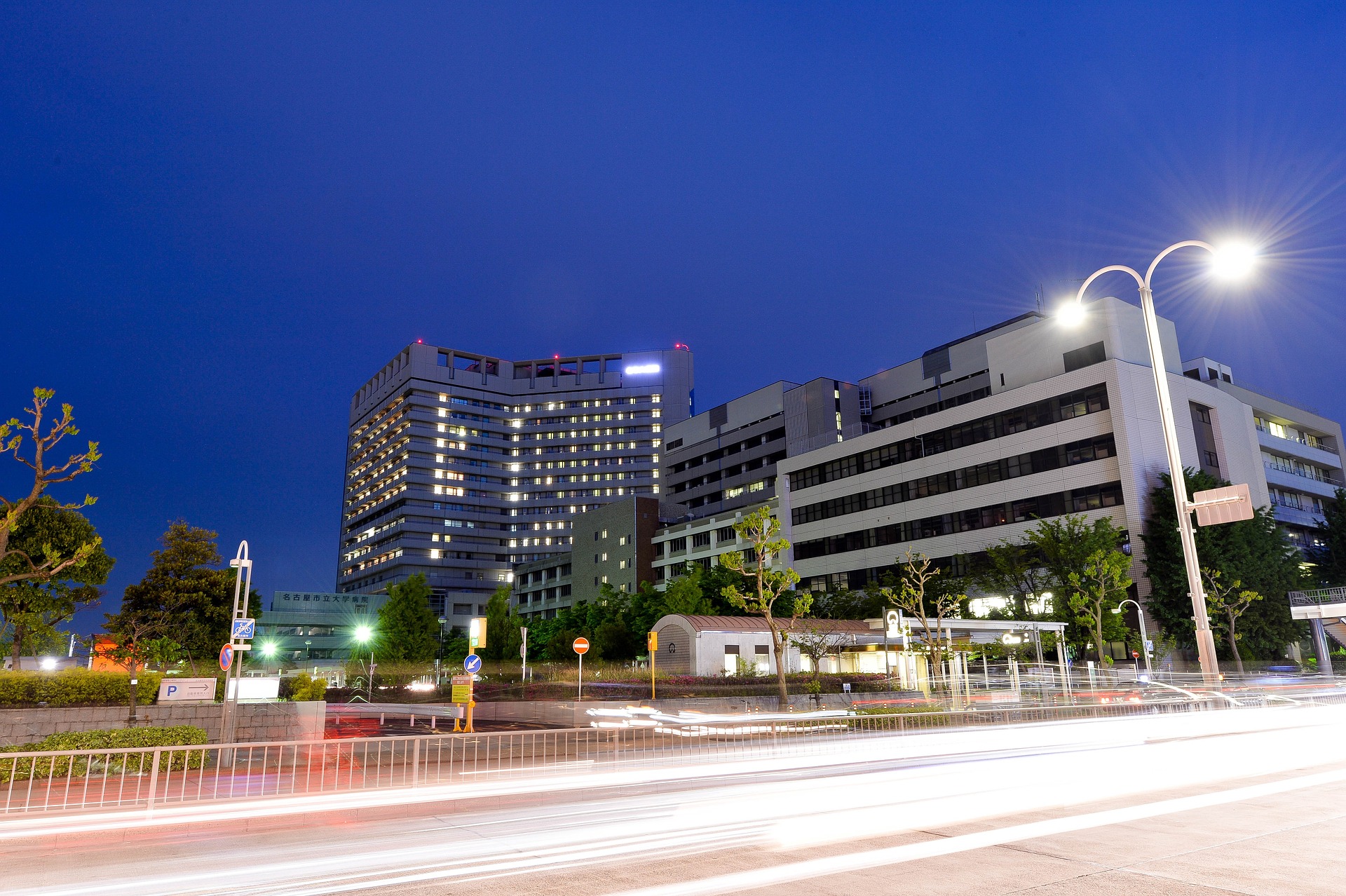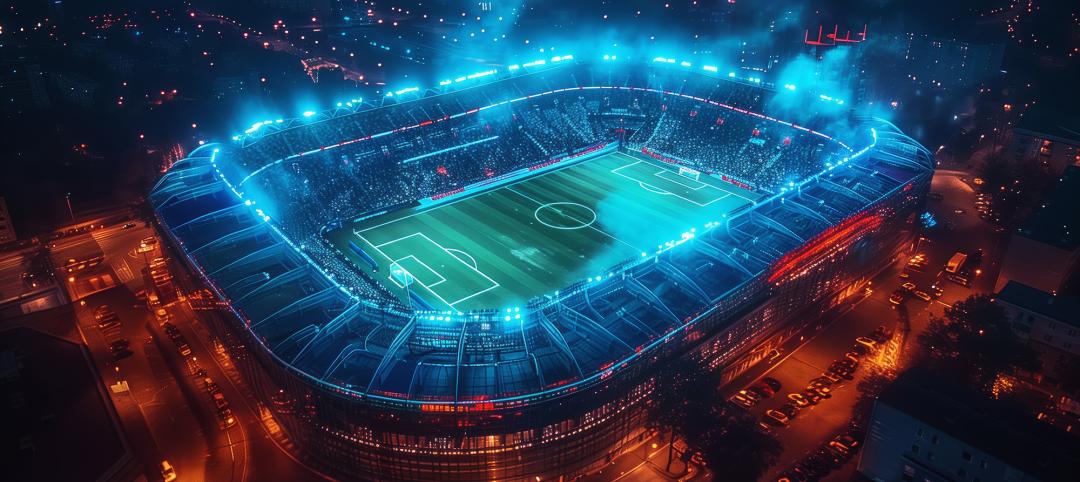Working with approximately $2 billion in healthcare construction and renovation projects each year, we can attest to the prevalence of humidity issues among a range of healthcare facilities including hospitals, medical office buildings, outpatient facilities, and more. But before we get into the cause of these issues and potential solutions, let’s explore what humidity is and why it matters in your facility.
Absolute humidity is a measure of the amount of water vapor in the air. Whereas, relative humidity (RH), in simple terms, is a measurement of how much water vapor is in the air compared to the maximum amount of water vapor saturation possible for that atmosphere/facility. For example, 100% RH would mean an atmosphere’s air is completely saturated with water vapor—which happens when it rains.
With studies showing that people spend approximately 90% of their time indoors, the quality of indoor air in any facility—including its humidity levels—directly affects human health.
THE DANGERS OF LOW HUMIDITY
When indoor air is too dry—or has RH levels generally below 30%—occupants can be faced with a number of health hazards including:
- Extended Airborne Transmission of Viruses: Certain viruses like the influenza (flu) and human coronavirus have been found to have increased infection rates in lower RH. Because these viruses are transmitted through respiratory droplets, lower RH will shrink the droplets and allow them to remain airborne longer and travel farther. In atmospheres with higher RH, the moisture in the air ensures viral respiratory droplets maintain larger diameters and settle on surfaces quicker and over shorter distances—allowing viral droplets to be disinfected more efficiently with surface cleaning. It should also be noted that other viruses can, conversely, survive well in high RH.
- Skin Irritation: Dry air can lead to dryness and irritation of people’s skin, noses, throats, hair, and eyes, aggravating patient conditions and decreasing occupant comfort.
THE DANGERS OF HIGH HUMIDITY
When indoor air is too moist—or has RH levels generally above 60%—occupants can face a different range of health hazards including:
- Mold Growth: Mold requires water, food (organic matter), and oxygen to grow. High humidity levels in a facility can supply the water mold needs to grow. The EPA affirms that mold can cause respiratory illness, allergic reactions, and other types of illness and irritations. One study found that 21% of 21.8 million cases of asthma annually can be attributed to residential dampness and mold.
- Dust Mites: Absorbing water through the air, dust mites thrive in high humidity environments. They are known to be one of the major indoor triggers for allergies and asthma.
- Fungal and Bacteria Growth: Most fungal species cannot grow in RH below 60%. Additionally, pathogenic microorganisms can adhere more effectively to moist materials and textiles.
WHAT CAUSES LOW OR HIGH HUMIDITY?
A number of actions and events can cause fluctuations in humidity—from rainy outside weather to cooking to showering.
However, one of the most common contributing factors to clients’ humidity control issues is a space’s air temperature and how it relates to the HVAC system air temperature—specifically a misconception about the relationship between temperature and relative humidity.
Generally, if air temperature decreases, absolute humidity also decreases—because air’s ability to hold moisture increases as the air gets warmer. First, a differentiation needs to be made between space air temperature and the HVAC system air temperature. The average building occupant typically has the ability to modify the space air temperature (using the thermostat setting). However, the HVAC system air temperature is a product of the overall HVAC system design and directly limits the range of conditions (temperature and humidity) of the associated spaces. The air provided by the HVAC system (when in cooling mode) can be simplified to a dew point temperature. Dew point is the temperature to which air must be cooled to become saturated with water vapor—correlating to 100% RH at the given temperature.
Relative humidity is relative to the temperature, conditions, and limitations of a facility’s atmosphere and mechanical/cooling systems.
The below scenario helps explain this phenomenon:
The included diagram is a psychometric chart used in HVAC design to visualize the process and conditions of an HVAC system. The dashed red line represents a dewpoint of 50.5 degrees Fahrenheit. This dewpoint line represents the lowest potential set of conditions at which a space can be served by this theoretical HVAC system. In this scenario, the space conditions of a healthcare space are represented by the red dot with arrows. When an occupant adjusts the thermostat, this red dot moves either left or right. If the space temperature is asked to be warmer, the dot moves to the right. As it does, the relative humidity (represented by the gray curved lines with associated percent values) goes down. In this specific example, the starting conditions are 68 degrees and 55% RH. If the thermostat is adjusted to 72 degrees, the RH will drop to 50%. Conversely, if the space temperature is lowered, the RH increases. In our example, if the temperature is lowered to 66.5 degrees, the RH increases to 60%.
If in this example the space in question was an operating room, the allowable range of conditions by building codes is represented by the blue area. The starting conditions of 68 degrees and 55% RH fall on the edge of this range. It is typical that, in most healthcare systems/facilities, the medical staff deem it medically beneficial to operate the operating rooms at colder temperatures. If our example HVAC system is limited by the red dewpoint line, then, as the space temperature drops below 66.5 degrees, the relative humidity increases past 60% which is a violation of code. With this example scenario and the provided diagram, you can visually see that space conditions are limited by the dewpoint of the HVAC system air.
This situation often occurs in healthcare facilities as mechanical systems may be designed to operate within temperature standards that are higher than what end-users, such as surgeons and doctors, may prefer. If a hospital or medical office building’s cooling system was designed with a warmer dewpoint that correlates to 68-72 degrees space temperature, but staff are running it daily at 62 degrees, this will lead to high humidity in the cooling season.
Humidity issues like this are often thought to only affect facilities located in hot, muggy climates. However, with the above chart in mind, humidity control can be an issue in any climate and any facility whose mechanical systems are being operated outside of their design parameters.
WHAT IS THE IDEAL AIR TEMPERATURE AND HUMIDITY LEVEL FOR HEALTHCARE FACILITIES? WHO SETS THE GUIDELINES?
Design and construction guidelines for healthcare facilities are largely established by three organizations:
- The Facility Guides Institute (FGI) is a non-profit organization which issues design and construction guidelines for hospitals, outpatient facilities, and residential health, care, and support facilities.
- The Joint Commission (TJC) is a non-profit organization that accredits more than 22,000 U.S. health organizations and programs. The Commission largely adopts FGI’s guidelines unless they conflict with a state’s local codes—in which case, the Commission will defer to a state’s codes.
- The Centers for Medicare and Medicaid Services (CMS) is a federal agency that provides Medicare and Medicaid funding services to U.S. healthcare facilities. The CMS has its own set of facility standards in addition to FGI guidelines.
Additionally, the ANSI/ASHRAE/ASHE Standard 170 has been a staple in healthcare design standards for more than 20 years. This standard is also part of the newer versions of the FGI guidelines.
WHAT TEMPERATURE SHOULD A HOSPITAL’S THERMOSTAT BE SET AT?
Largely, building codes for healthcare facilities dictate that air temperatures should fall within 68 to 72 degrees Fahrenheit. However, we find most ORs and other spaces within healthcare facilities prefer air temperatures significantly colder in order to accommodate staff comfort and patient safety.
The Joint Commission allows deviations from temperature code if a surgeon or doctor deems it medically necessary for a patient’s comfort and/or safety. For each deviation, a form needs to be completed and filed inside the facility’s TJC compliance file which can be audited at TJC’s discretion.
Typically, we find that air temperatures as low as 66 degrees Fahrenheit can be accommodated while maintaining under 60% RH by most standard cooling systems. For temperatures colder than that, special systems and additional costs often come into play—we will dive further into this topic in the next section.
WHAT HUMIDITY LEVEL SHOULD A HOSPITAL MEET?
Industry standards typically set RH levels for healthcare facilities at a minimum of 30% and a maximum of 60%. However, the CMS historically has lowered the RH threshold to 20% which many healthcare facilities in dryer climates find easier to meet.
In the wake of the COVID-19 pandemic, these guidelines are being re-assessed. With new research showing that airborne infection rates of viruses like the influenza (flu) and human coronavirus increase in low RH, experts are calling for minimum RH thresholds to increase. In light of this, many healthcare facilities are choosing to increase their RH minimums beyond code minimums to 35%.
SOLUTIONS FOR COOLER AIR TEMPERATURES IN HEALTHCARE FACILITIES
If your team deems it necessary for your facility’s air temperatures to be cooler than the 68-degree Fahrenheit minimum standard, there are solutions.
Most standard cooling systems can accommodate space temperatures down to 66 degrees below 60% RH. However, we have received requests for 62-degree ORs or 58-degree orthopedic clinics—in which cases, specialty systems can be designed to extend the temperature minimum of cooling systems. These specialty systems are typically more expensive than standard systems but do achieve lower temperature ranges, while still maintaining the relative humidity within the code upper limit of 60%.
In the provided psychometric chart, the dashed green and blue lines represent a “typical” healthcare chilled water system and a low temperature capable system, respectively. The blue dot represents a theoretical Operating Room which users desire to operate at 62 degrees. With the diagram, you can quickly see that a dewpoint below this point falls well below typical standard HVAC systems and would require the use of enhanced systems.
These enhanced systems may include desiccant cooling systems, enhanced air handlers, low temp chilled water systems, and other methods to humidify or dehumidify a space at lower temperatures.
TIPS FOR WORKING WITH AN EXISTING COOLING SYSTEM
At the end of the day, you can only work within the boundaries and standards of your system.
Here are a few tips to keep in mind:
- If not already known, work with an engineer partner to determine the limitations of your cooling system
- Educate operators on system boundaries and the inverse relationship between temperature and humidity outside of those boundaries
- Provide clear direction of facility temperature standards to end users
Hospital Case Study at a Glance
One facility that SSR has worked with for many years was experiencing increases in relative humidity above 60% RH. Its cooling system had been designed to operate within the standard 68-72 degrees Fahrenheit and under 60% RH. After looking back at the cooling system’s data reports, the team noticed that increases in relative humidity had begun only after air temperatures were lowered to 64 degrees. The air temperatures had been lowered at the request of surgeons who found 68 degrees to be too warm while performing procedures. Reviewing the data more closely, we were able to determine that spikes in humidity largely occurred on rainy days. While the facility’s systems had not been designed to operate below 68 degrees, the team determined the facility could run at 64 degrees while maintaining the relative humidity under 60% as long as outside precipitation was minimal. On rainy days, operators increase air temperature to 68 degrees to maintain the relative humidity under 60% and thus compliant with healthcare regulations. The key to this facility’s successful operations is understanding their cooling system’s boundaries and communicating how to work within those boundaries and standards to operators and staff.
DESIGNING OR UPGRADING COOLING SYSTEMS
In some cases, an existing cooling system may need to be retooled or upgraded to fulfill end user needs. We commonly experience this situation with medical office buildings or outpatient facilities. These facilities are often designed and developed before tenants are confirmed. The cooling systems generally are designed to operate within temperature ranges that are higher than future tenants may desire. In this case, the only way to adjust this programmed temperature range is to adjust the system itself.
When upgrading existing or designing new cooling systems, here a few tips to keep in mind:
- Clearly establish your budget—enhanced cooling systems typically require a larger budget
- Identify and communicate with end users to determine their air temperature needs
NEED HELP WITH YOUR FACILITY?
As one of the most regulated entities, healthcare facilities can face many challenges when it comes to facility maintenance and operations. Having worked with healthcare clients for more than 50 years, our team closely understands those challenges. If you would like to have a conversation about your facility’s HVAC systems, contact SSR’s mechanical engineering team.
About the Author
Lee Nordholm, PE, LEED AP, is a Senior Mechanical Engineer in SSR's Dallas office. His expertise includes the design of heating, ventilating, and air conditioning systems of all descriptions. His 15 years of experience is in healthcare, education, and laboratory facilities.
More from Author
SSR | Jul 15, 2024
Smart stadiums: The future of sports and entertainment venues
These digitally-enhanced and connected spaces are designed to revolutionize the fan experience, enhance safety, and optimize operational efficiency, according to SSR's Will Maxwell, Smart Building Consultant.
SSR | Feb 13, 2023
Exploring intelligent lighting usage in healthcare, commercial facilities
SSR's Todd Herrmann, PE, LEEP AP, explains intelligent lighting's potential use cases in healthcare facilities and more.
SSR | Sep 14, 2020
Energy efficiency considerations for operating buildings amid a pandemic
During these times building owners and operators should remain focused on verifying their building systems are functioning properly and maintenance routines are kept on schedule.
SSR | Oct 2, 2014
Effective use of building enclosure mock-ups within the commissioning process
Engineers from SSR offer advice and guidelines on implementing building enclosure mockups on any project.










